At the end of June, I had the honor of presenting a live demonstration webinar for EasyCare on my techniques for therapeutic application of the EasyShoe.
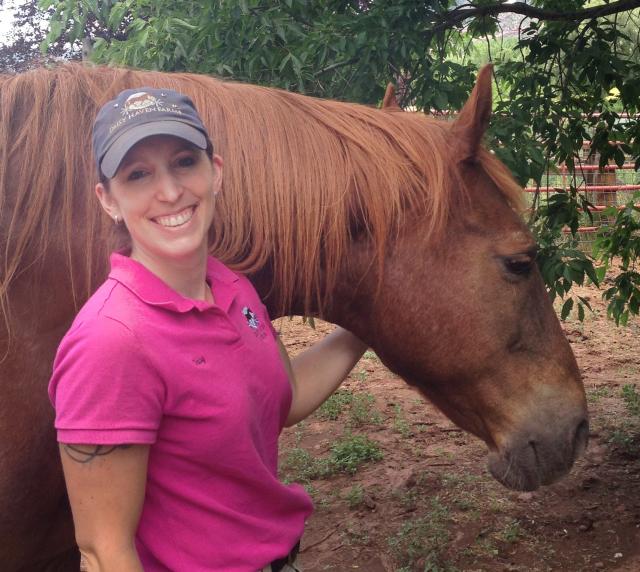
Therapeutic application of glue on composite shoes would be appropriate for any horse whose needs cannot be met with the trim and/or basic shoe application alone.
The webinar featured a horse named Cash, a 16 year old Saddlebred gelding who is being treated for laminitis due to insulin resistance. While he is undergoing rehabilitation through diet and environment changes with veterinary intervention, he was not improving in comfort level.
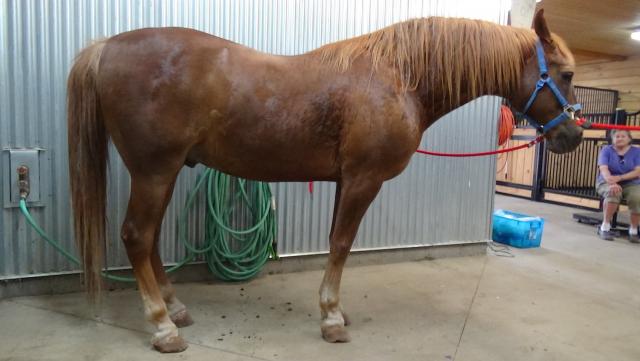
Upon examining his feet, we determined he would be a good candidate for the webinar. He had enough foot to work with to show positive changes through the trim, but would also benefit from the added protection and mechanics provided by therapeutic application of EasyShoes.

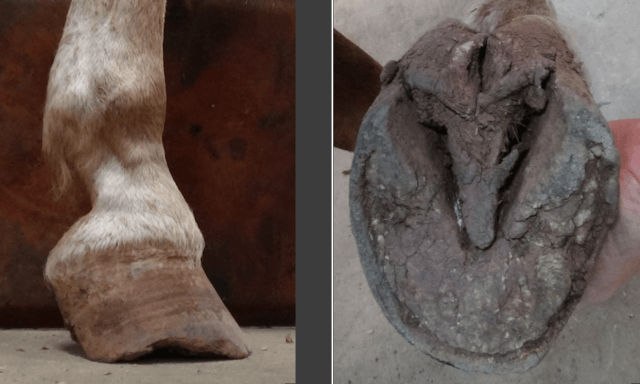
Upon reading Hoof Love Not War, you’ll note that I strive to be objective in my work at all times. After seeing Cash and his feet, I asked for radiographs, so I could be as accurate as possible and do no harm. Shown below are the radiographs of his front feet before trimming.


While the radiographs were not ideal with the left front foot partially cut off, I am grateful to the vet who made time amongst true emergencies to take them for us last minute before the webinar. They gave me a good idea of relative coffin bone position within the hoof capsule in order to help Cash.
I have explained my goals for trimming and shoeing from radiographs in various scenarios in What To Do With That Foot?, For The Love of the Small (Often Foundered) Pony, Rehabilitation of the Insulin Resistant Foundered Horse: DHF Style and Broken Down May Not Be So Broken.
However, in summary, the four most important criteria for me in my hoof care work is:
- 3-8 degree palmar P3 angle: the angle of the bottom of the coffin bone in relation to the ground.
- 50/50 base of support from toe to heel around the center of rotation of the hoof capsule.
- Minimizing flare and distortion in the hoof capsule.
- Hoof-pastern axis in alignment
With Cash, I felt I was going to be able to get close to my criteria, however they needed to be modified a bit due to several reasons:
- Cash has had the current hoof distortions for a very long time. Since I was not going to be following up on Cash’s hoof care, I didn’t want to make changes that would be dependent on my future work.
- The purpose of the webinar was to demonstrate therapeutic application of EasyShoes. And I only had one hour to do it in. Normally when making big changes for a horse with issues like Cash, I would do a progressive series of radiographs after trim and before shoeing, and tweak my trim and shoeing plan before shoe application. It wasn’t realistic in the format of the webinar so I felt I needed to be a bit more conservative due to not having the extra radiographs to push his feet further.
Here are his feet after trimming:

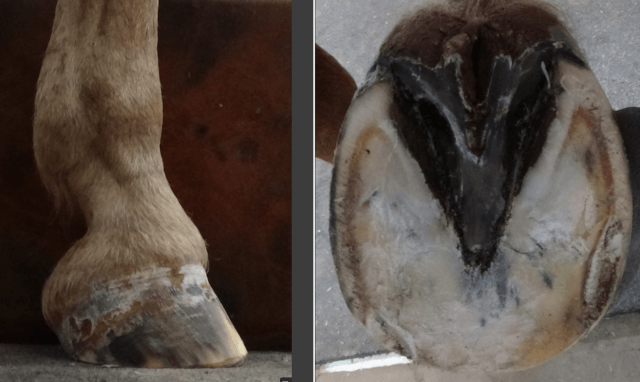
And radiographs with his shoes on:
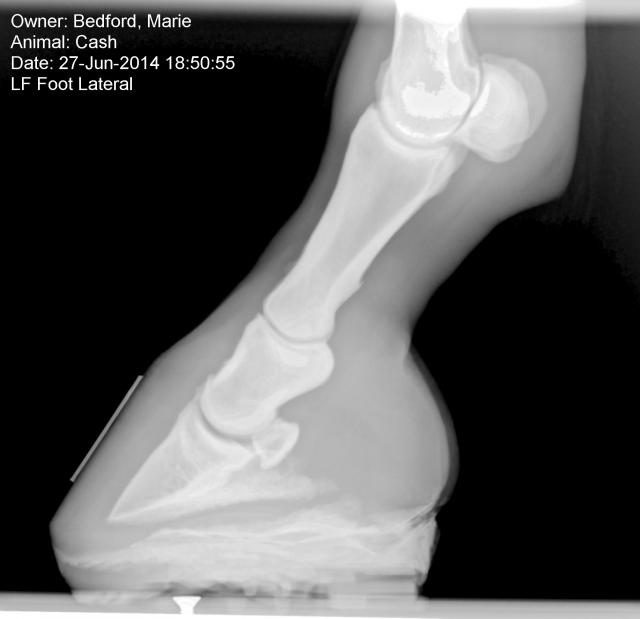

All in all, I am very pleased with how his feet turned out. I know I helped him a lot, and his caretaker reports he is moving more freely, jogging and even cantering around his dry lot. He has now lost weight and is feeling much better due in large part to the increased movement. I am grateful for the opportunity the webinar provided for me to help Cash.




